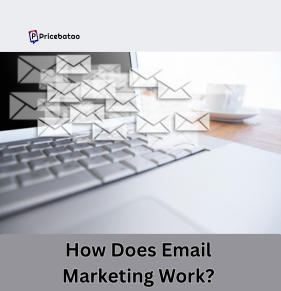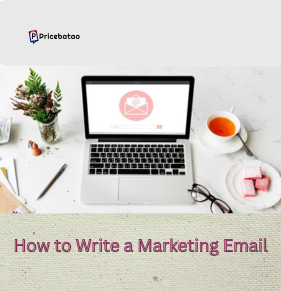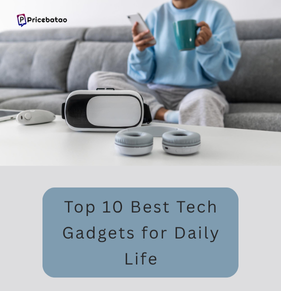What is on-page seo?
Focus on enhancing the visibility of your blog posts and web pages in search engines such as Google, which is on-page SEO. It includes enhancing various sections of your site, such as content and HTML markup, to improve their ranking in search results. Even minor tweaks can have a significant impact on your page rankings and the volume of traffic they attract.
Your material should be useful, accurate, and in line with the keywords consumers are searching for to achieve the best results in on-page SEO. Once you have that down, you can make a few minor adjustments to your pages to attract more relevant visitors and improve your search results.
Once your material is prepared, it’s time to employ a few simple on-page SEO strategies to raise your search results and draw in more visitors.
1. Add keywords at suitable locations
Including your primary keyword in prominent locations on your website enables both users and search engines to quickly grasp your content. Make sure your keyword is in the introduction paragraph, page title, URL, main heading (H1), and a few subheadings (like H2 or H3).
Using the exact keyword in these areas is beneficial, but Google can fairly accurately identify similar terms and synonyms. Therefore, if your keyword is long, you don’t have to say it exactly every time.
There is no ideal frequency for the use of keywords. Overusing it, known as keyword stuffing, can hurt your SEO. Keep your topic straightforward throughout the text and concentrate on writing naturally. The secret is to enable both Google and your viewers to readily grasp the material on your website without seeming clumsy.
2. Arrange Your Content Using Header Tags
Header tags—that is, H1, H2, and H3—aid both Google and readers in grasping the design of your page. These labels divide your content into easily skimmable parts. They look like this: Your Heading Here.
One basic method is to use them here:
- Generally, for the primary headline, one H1 tag should be used per page.
- For more information, examples, or subpoints in each section, use H3 and lower-level tags.
Proper use of headers not only enables search engines to understand your material but also enhances the user experience on your website. It arranges the information and quickly reveals the goals of every segment.
3. Make an Interesting Title Tag
The title tag is frequently what your website shows in search results first. One might choose your link over others because of a memorable title.
Here are some easy ideas for developing a good title:
- Match search intent—assure your title informs readers that your material tackles their problem.
- Ignite curiosity—engage people, but stay away from false clickbait that runs counter to your content.
- Include your keyword or a closely related variant that fits naturally in the title.
- The traffic your page gets might be much influenced by a well-crafted title; therefore, take the time to make it stand apart.
4. Strong meta descriptions drive more clicks
Although meta descriptions won’t affect your Google ranking, they could still entice more clicks to your website. About 37% of the time, Google presents these brief descriptions in search results. If it doesn’t, it rather draws material from your page.
Therefore, avoid stressing over crafting the ideal meta description for every page. Prioritize the main pages, like those with the most search engine traffic or your own.
Simple ideas on composing good meta descriptions follow:
- Offer more information beyond the title, like something not mentioned.
- Match search intent; that is, what people are looking for.
- Speak straight to the reader; use an active voice.
- Google will emphasize your keyword in bold, therefore improving the visibility of your listing.
5. Utilize sensible SEO-friendly URLs
Both search engines and consumers benefit from concise, simple, and focused URLs that reflect the primary subject of the page. According to Google’s SEO novice manual, pieces of the URL frequently appear in search results as breadcrumbs, therefore alerting visitors to the subject of your website right away.
Adding a keyword to your URL helps consumers feel more confident that your material meets their search, even if it won’t immediately increase your rankings. Furthermore, a well-organized URL helps you recall what the page first covered, should you return to earlier ones later.
Advice on Selecting the Correct URL
- Keep the URL you build basic and straightforward. Here are a few fundamental rules to abide by:
- Unless strictly required, stay clear of dates. Although a URL like /bestseotools2025 might seem outdated next year when you update the content, this year it might be effective.
- Avoid using minor terms. URLs do not need for,, to, or of; hence, they can be deleted without affecting clarity.
- Keep it relevant and brief.
A URL like domain.com/article/keywordresearchguide is much better than a lengthy, messy one, such as domain.com/2025/07/21/articlekeywordresearch.
6. SEO Content’s Depth and Clarity
Clear and thorough material helps to increase user trust, readability, address actual search questions, and enhance search rankings. Both search engines and readers gain from your clear, educational, and well-focused writing.
Main Ideas:
- Enhances User Experience: Clear material keeps readers engaged and attracts them to remain on your site longer.
- Supports Search Intent: Aligned with what people are searching for, in-depth material responds to user inquiries more successfully.
- Improves SEO performance: Well-organized, relevant content that offers genuine value is preferred by search engines.
- Establishes Trust and Authority: Depth and clarity demonstrate knowledge that helps you stand out as a dependable source of knowledge.
7. Insert inner links wherever they would be beneficial
Internal links help SEO as they also direct users to more helpful information. Link to other relevant pages within your site wherever available.
Search engines can find your website, understand the subject of each page, and assess the interaction of your content thanks to these linkages. They also show which pages are most vital to you, therefore enhancing their visibility through link strength.
The following advice will help you to successfully include internal links:
- Use natural anchor text. Choose words that have relevance in context and avoid overpacking them with keywords.
- Point to crucial pages. Connect to significant content like your top blog entries or product and service pages.
- Give the hub-and-spoke approach a try. This means that related material should link to a central hub page to increase authority.
- Look for linking possibilities via Google. Type your keyword into Google to see where you’ve already used it and locate perfect locations to include a link.
Done correctly, internal linking can be more useful to search engines and more approachable to consumers.
8. Optimization of images
Improve user experience and SEO by means of optimization of your images.
Images can appear in Google Image Search and increase visitors to your website in addition to improving the visual appeal of your material. Three simple steps to take to maximize your images are:
Compress your images. Smaller image files load quicker, which helps your page speed and overall user experience. Many free and premium software choices exist to help you compress images without losing quality.
- Google examines picture file names to determine what picture is present; hence, use descriptive ones. Be precise and keep the name brief and descriptive—avoid keyword stuffing.
- Meaningful alt text should be added. Alt text increases your website’s accessibility by enabling those using screen readers to grasp the contents of the picture. Additionally, it aids Google in more thoroughly understanding the image content, therefore boosting your SEO.
Following these easy pointers will not only improve your website’s performance but also provide another route for possible visitors to discover your material.
9. Schema markup gives a good result
Enhance visibility through schema markup to achieve more accurate search results.
Called rich results, improved search results offer more information, including product reviews, star ratings, event specifics, or recipe instructions. These elements can boost click-through rates and help your website stand out in Google search results.
Although not all search questions enable rich results, including schema markup can give you a great edge if your material satisfies the requirements. Using schema markup is critical for making your page eligible for these improved results.
Adding schema is a wise approach to raise your chances of being seen and improve how your pages show up in search.
Be patient with OnPage SEO; it takes time
Although you shouldn’t be disheartened if you don’t see immediate results, on-page SEO can help your material rank higher in search results.
Search habits are always changing. Fresh information comes out; your understanding or knowledge can grow; even search patterns themselves can evolve. Consider the phrase LLM, for example. Previously, mostly related to a law degree; today, in technological circles, it is frequently linked to big language models.
View Forex Rate and Gold Rate
















